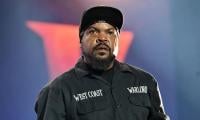Form No 2 of the upcoming Digital Census 2023 includes basic questions about gender, age, religion, marital life, nationality and ‘mother tongue’. According to this form, 14 languages have been included as mother tongue in this census.
These languages include Urdu, Punjabi, Sindhi, Pashto, Balochi, Kashmiri, Saraiki, Hindko, Brahvi, Shina, Balti, Mewati, Kailash and Kohistani. There is a separate box for the ‘other’ languages.
There are about 60 other languages in Pakistan which have been put under the ‘other’ category. Languages like Khowar, Gujari, Torwali, Gawri, Brushaski, Wakhi, Gawarbati, Palula, Dameli, Ormuri, Dhatki, Marwari, Pahari, Beteri, Mankiyali, Ushojo, Kati, Kamviri et al are not mentioned in the form.
The manual for census enumerators provided by the Pakistan Bureau of Statistics (PBS) defines mother language as “the language that a person has been speaking since childhood. Mother tongue is the language that a person uses to communicate with his parents and other family members.”
Besides the issue of language omission, there are other concerns as well, including the fact that the census will be carried out in late winter for areas which get heavy snowfall such as upper stretches of Swat, Shangla, upper Dir, upper and lower Kohistan, Kohlai Palas and Chitral. On the one hand, officials may not be able to go to every structure or building which are on the hills for geotagging. On the other, many people from these hilly areas opt for seasonal migration, flee the harsh winter and spend three to four months in the plains of Punjab, Sindh and Khyber Pakhtunkhwa (KP). These migrants are likely to remain excluded from the total count.
There are several questions regarding the nationality and languages columns of the form. The nationality column, which we may call ‘civic or political nationality’ or ‘citizenship’, includes the following options, Pakistani, Afghan, Bengali, Chinese and ‘other’. Some people may read it as ‘ethnonationality’ and mark themselves as Afghan.
In the language column, as most languages are excluded, there are several questions that remain unanswered. For example, the form includes a language name ‘Kohistani’. It is a vague term, and, in principle, there is no language called ‘Kohistani’ in Pakistan, and this Persian term is applied to any hilly areas, whether it is in the desert of Thar or in the mountains of the Hindu Kush and the Himalayas.
Yet the PBS has included this name, certainly referred to them by the KP government which previously declared it an official name of the Miya/Mayo language in the western stretches of Indus Kohistan along the Indus beyond Bisham.
Does the term Kohistani also refer to the Gawri and Torwali languages? This is a valid question as there are people in District Bahrain in Swat and Tehsil Kalkot in Upper Dir who consider these two languages as Kohistani.
It is however evident in Form 2 that the term Kohistani does not include Gawri or Torwali at all, and only refers to the Mayo/Miya language which is spoken in the western side of the upper and lower Kohistan districts in KP. It does not refer to the Shina language of Shinaki part of eastern Kohistan either, which is known as Shina Kohistani and is a major dialect of the Shina language; people in the region also often call it Kohistani. It is easy for them now that they can choose the Shina language in this form.
In May 2011, the KP Assembly passed a law titled the Khyber Pakhtunkhwa Supervision of Curricula, Textbooks and Maintenance of Standards of Education Act 2011. Under this act, at least five languages of this province – Pashto, Saraiki, Hindko, Khowar and Kohistani – were included in the school curriculum as subjects in primary education, and the process of curriculum development was given to the Directorate of Curriculum and Teacher Education (DCTE). With the help of the Khyber Pakhtunkhwa Textbooks Board, the DCTE developed course books in all these five languages and delivered them to government schools. Had Kohistani also meant Torwali and Gawri, the provincial government would have printed books in these languages and sent them to schools in their respective areas. This was not done. So now the official ‘Kohistani’ language is only the language of Duber, Ronalia, Patan, Kamila, Seo and Kandhia, on the western side of lower and upper Kohistan districts.
If enumerators include Torwali and Gawri in this census box as Kohistani now, it will only harm these languages, and consequently they will lose their identity. These three languages, Kohistani, Gawri and Torwali, are different. Whenever the speakers of these three languages meet, they speak a third language, mostly Pashto. If the language was one, the people would not have to resort to Pashto or Urdu to communicate with each other.
Torwali and Gawri speakers may call themselves Kohistani, Yusufzai or Quraish, but they must put their mother tongue in the ‘other’ box until the inclusion of their languages in the census form with their proper names, Gawri and Torwali.
The speakers of Torwali, Gujari and Gawri have also requested the Peshawar High Court through a petition to include their languages in this digital census.
Speakers of Hindko, Potohari and Punjabi, and also to a large extent Saraiki, understand each other’s languages, and based on this, many people consider these languages to be dialects of one single language.
But these are considered separate languages, and are officially recognized in the census as different languages. If the Torwali and Gawri speakers put their different languages under one collective name, they will be at a loss as resources are distributed on the basis of census. Over the years, there will not be any chance to include Gawri and Torwali in public education in areas where a majority of children speak them.
The term ‘Kohistani’ is also called a sub-branch of the Dardic languages of the Indo-Aryan family of languages, which include the Maya/Kohistani, Gawri, Torwali, Bateri, Tirahi, Gawro, Chilisoo, Mankiyali languages. And this classification was mostly done following the ‘Pathan’ invasion in the 16th century. These invaders, as Norwegian anthropologist Fredrik Barth informs us, label these people as ‘Kohistani’ for the dominant official language that time was Persian. The four sub-families of the Dardic languages are the Shina and Kunar groups, Chitrali, and the main Central /Kohistani group.
Data collection and its authenticity has always been a problem in Pakistan. The census is one such means of data collection which is also politically driven, lacking sound research. All decisions are made on the advice provided by people who do not carry out research on their own.
Pakistan is a strange country where the census could either be not held for 20 years, or be held twice in a period of six years. One wonders why this digital census is necessary at all when the Election Commission has already delimited the national and provincial constituencies.
The writer heads an independent organisation dealing with education and development in Swat. He can be reached at: ztorwali@gmail.com















